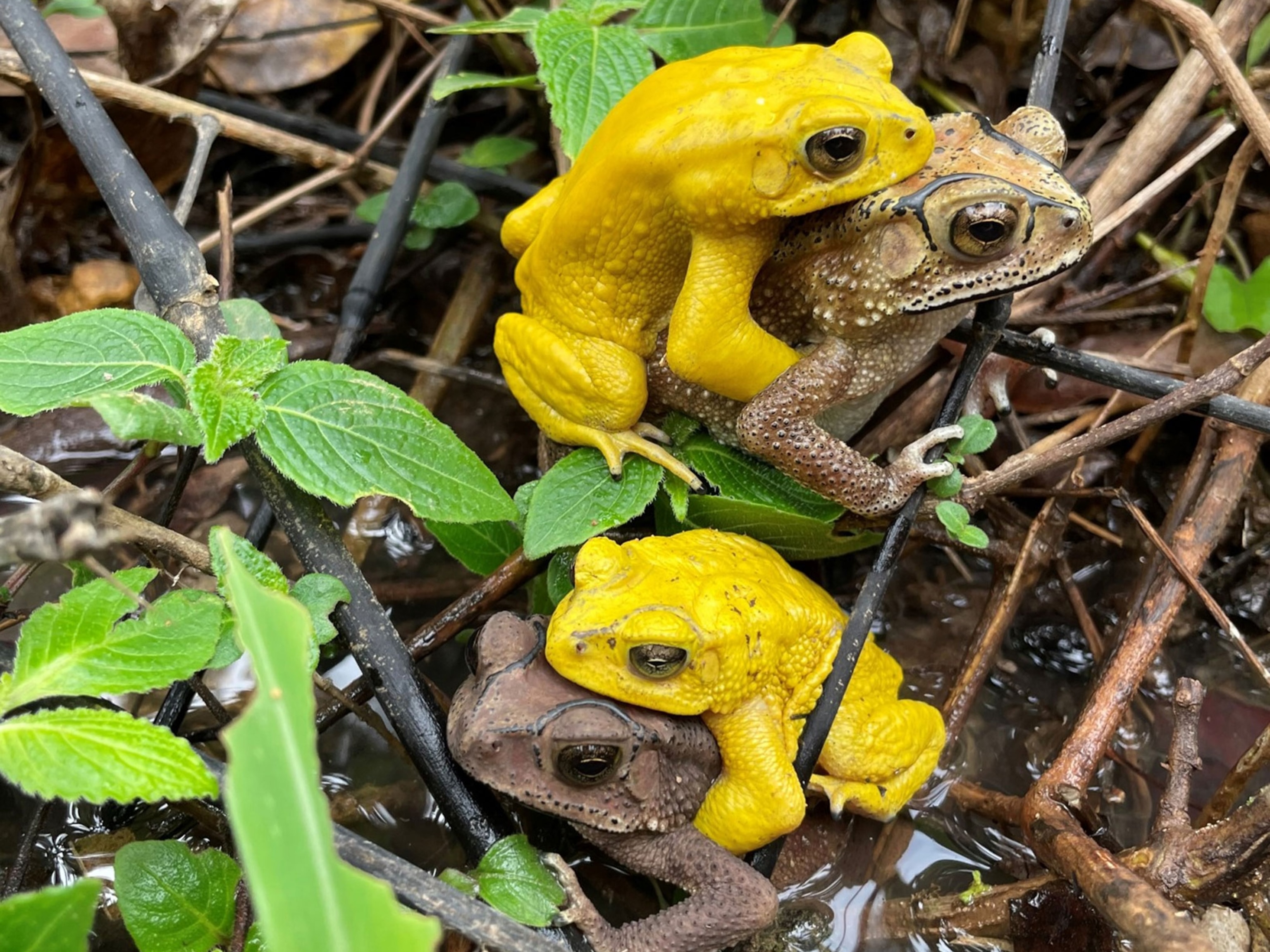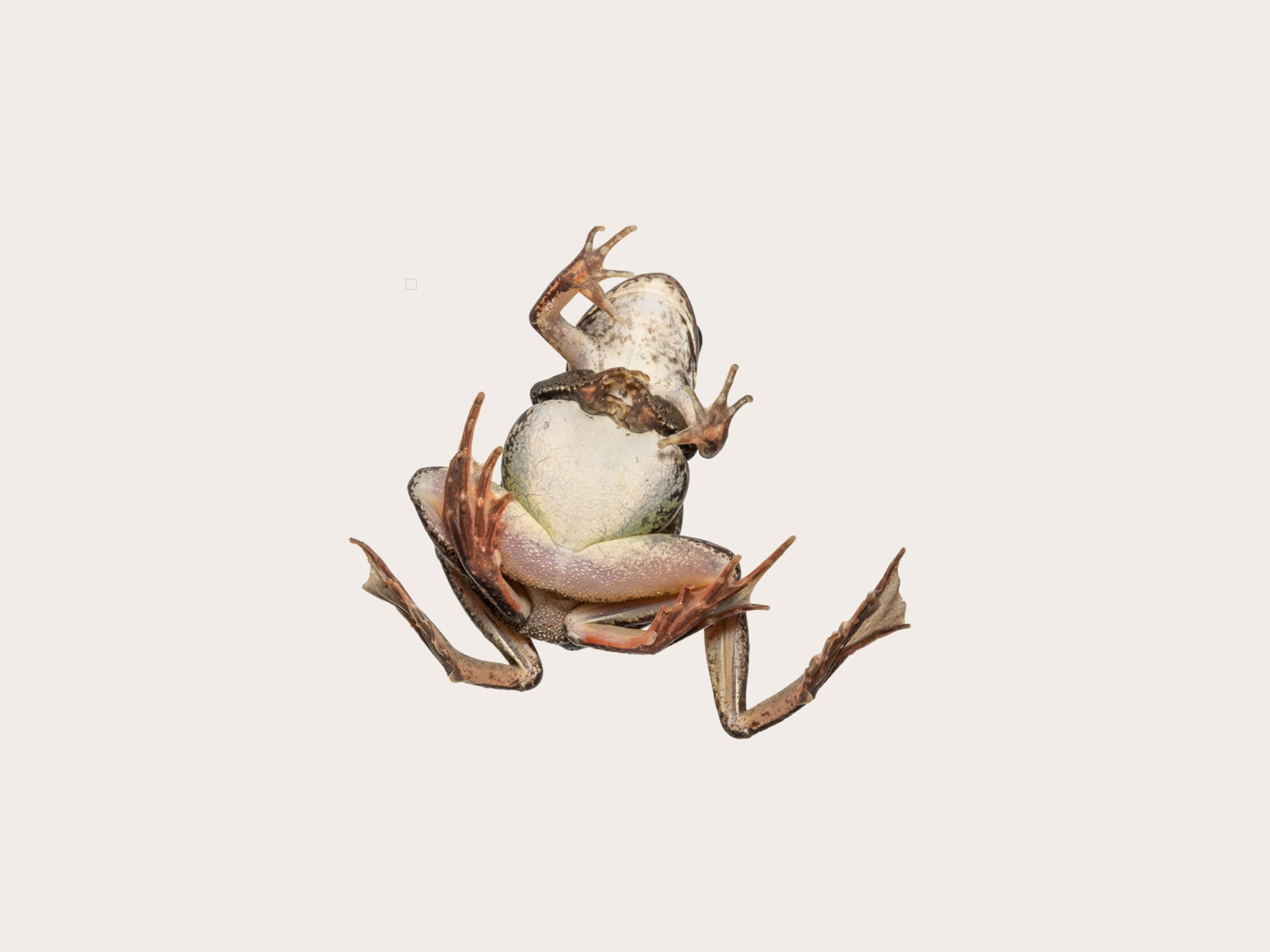
A Prince of a Paramour
Basic Instincts: A genteel disquisition on love and lust in the animal kingdom.
He builds her a cozy love nest. He woos her with long serenades. Once they start a family, he babysits. The guy is such a catch that one lady after another shows up to play house with him.
That's good news—because the more the southern corroboree frog (Pseudophryne corroboree) procreates, the better the chance of saving one of Australia's most famous and endangered amphibians.
At the start of breeding season the quarter-size male uses his hind limbs to sculpt moss into a chamber near a water source. He keeps up a courtship call until a female enters the nest. She lays 15 to 38 eggs, onto which he directly deposits sperm. She departs; he stays. All season he keeps calling, welcoming up to ten females, fertilizing clutches of eggs—even building a second chamber, if needed, for egg overflow. The male then stays in the nest for six to eight weeks, until the nest floods with fall and winter rains, in which his tadpoles hatch.
Drought can dry up breeding pools before tadpoles metamorphose. Bushfires claim habitat, and the chytrid fungus striking many frog species can kill corroborees before they reach breeding age. Today perhaps 50 exist in the wild. But breeding programs at the Melbourne Zoo and Sydney's Taronga Zoo placed hundreds of eggs in nest areas in 2014, in hopes of keeping suitors singing in the future.
The feature Basic Instincts: A genteel disquisition on love and lust in the animal kingdom appears every month in National Geographic magazine.





